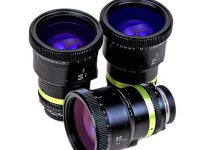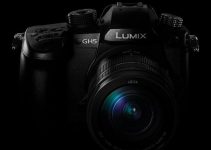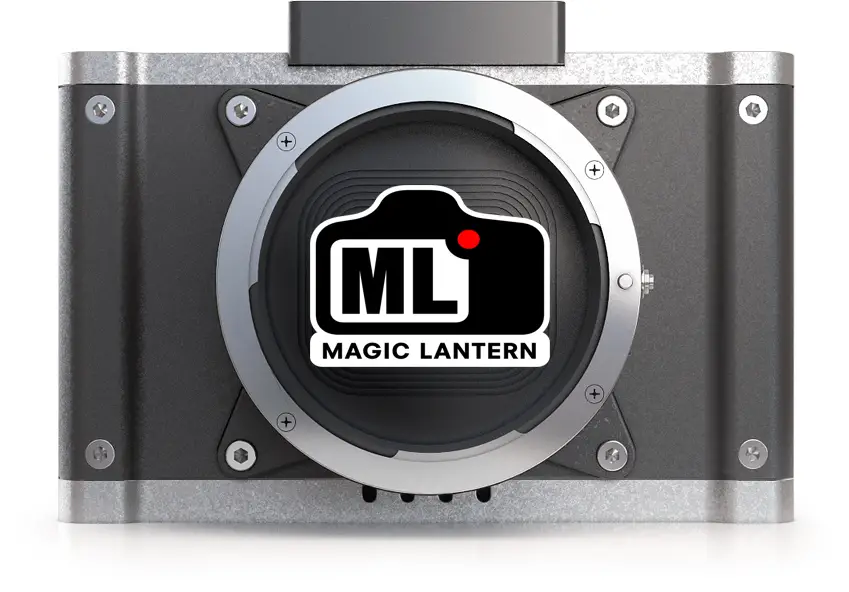
Potentially big news today as Apertus announced that lead developers from the Magic Lantern community have offered their support on the development of the AXIOM Beta.
The ML team has done wonders for Canon DSLRs and smaller cameras by unlocking key features such as 14-bit uncompressed Raw video recording, HDR video, audio monitoring, and a ton of exposure tools making cameras like the Canon 5D Mark II, Mark III, 550D (T2i), Canon 7D and many more into incredible storytelling tools.
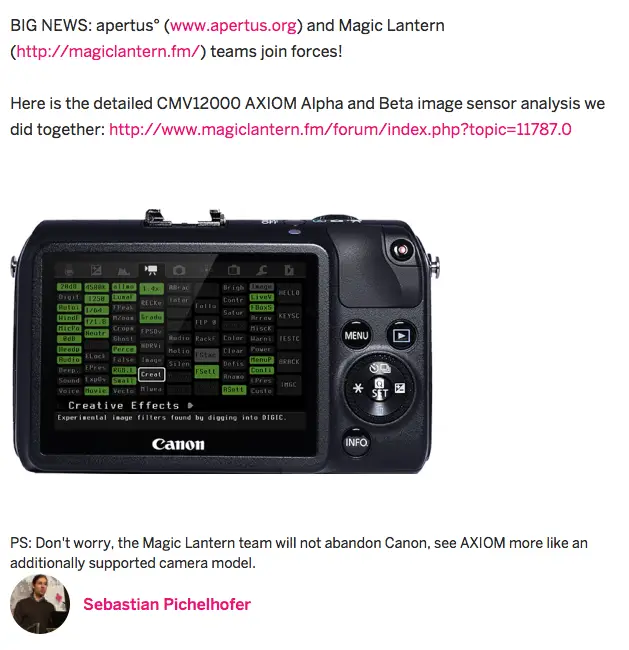
Axiom Beta Crowdfunding campaign update via Sebastian Pichelhofer, Apertus Chairman & Product Manager
Magic Lantern have offered to provide help for MLV in-camera support as well as assist with the development of other features for the crowdfunded AXIOM Beta camera by Apertus, the first 4K open source digital camera.
The AXIOM Beta offers two choices of sensors – either the CMOSIS CMV12000 (4096 x 3072) Super35/APC-S format, Global shutter or the TrueSense KAC12040 (4000 x 3000) 12MP Four Thirds (4/3), Rolling shutter. A1ex from Magic Lantern performed sensor analysis and shared some intriguing insights, which we’ve summarized below.
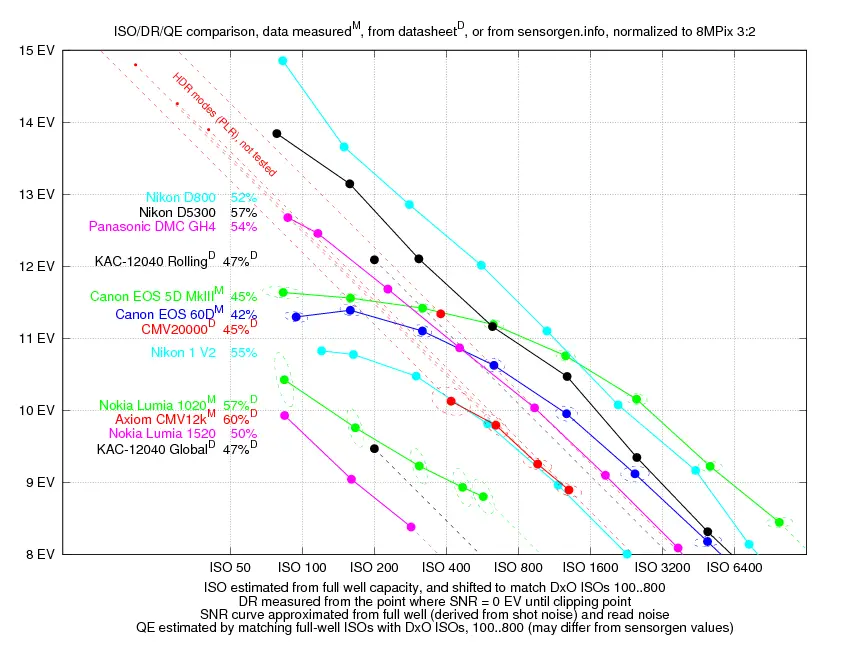
- At 4K native resolution from a 8MP 3:2 image base ISO on the CMV12000 sensor is roughly ISO 400 (ISO maxes out at around 1250) on the chart above. About the same DR and low light performance as the Nikon 1 V2 (see chart above).
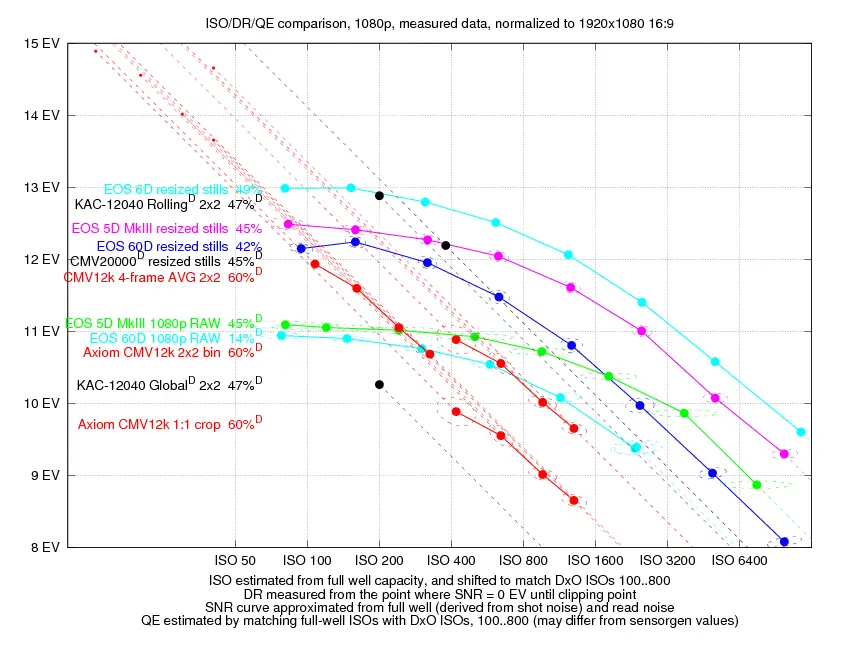
- 1080p via pixel binning (2×2 method) can increase Dynamic Range by 1 stop approximately.
- HDR recording modes – likely to improve highlights, but not shadows. All 3 HDR variants listed on the Axiom Beta use faster shutter speed in highlights. May introduce motion artifacts, but benefit from low ISO values below ISO 50.
- Dual ISO – improvement maybe me marginal, only 0.4 stops, probably not worthwhile.
- Long Exposures – may hold potential significant benefits due to the fact the Axiom features an FPGA (field-programmable gate array) rather than a locked processor. Thus “…averaging 64 images will give 3 more stops of DR, just like that. Assuming the hardware is fast enough to average 4K at say 100fps, a 10-second exposure could have a 5-stop DR boost. Without motion artifacts or resolution loss.” However, the increased DR in the highlights will introduce more noise in the shadows.
- High Frame rate options – The CMV12000 sensor will not do 300fps in 4K, but possible via binning at 1080p if hardware is fast enough.
- The TrueSense KAC12040 4/3 sensor measured at 12 stops DR with rolling shutter and around 10 stops dynamic range with global shutter.
Here’s what a1ex from Magic Lantern had to say about the sensor options for the AXIOM Beta in conclusion after his testing:
Global shutter and 300fps are not free – you lose a little low light ability, but not much.
CMV12000 – full resolution
The base ISO is about 400 (maybe lower once you attach the IR blocking filter), and it goes to about ISO 1250 with analog amplification. At high ISO, the noise improves by only 0.4 stops. If my math (and also DxO and sensorgen’s math) is not screwed up, this sensor is on par with the little Nikon 1 V2, and about 1 stop behind a Canon 60D.The row noise (banding) is a major problem, and I don’t currently have a solution for it.
CMV12000 – 1080p
I didn’t test this mode, but with proper 2×2 binning (without introducing additional noise), this sensor would catch up (but that’s because Canon does poor downsizing). At its base ISO, it’s really close to the 5D3 in 1080p RAW at ISO 800 (note that 5D3 ISO 800 in LiveView is more like DxO ISO 500). In low light, it’s only 0.5 stops behind the 60D in 1080p RAW (1734×975), and about 2 stops behind 5D3 in 1080p RAW ISO 6400.Not bad for a very fast sensor with global shutter. And there are tricks to squeeze even more DR, without motion artifacts, like averaging 4 or 6 frames, or exploiting the black sun correction to squeeze more highlights.
KAC-12040
For low light, in rolling shutter mode, the smaller sensor is better on paper, despite its smaller size (I expect it to be about 1 stop better). I didn’t test this sensor, so I’ve only plotted what I could figure out from the spec – but there are hints that low-light performance might be even better.I believe this sensor will be very similar to GH4 in low light, and with a bit of luck, on par with 60D (which is 0.5-stop better than GH4).
In global shutter mode it’s not that good for low light – you’ll get better results from a smartphone (Lumia 1020).
But hey – you can choose between global shutter and low light, without swapping the sensor!
The collaboration between these two open-source communities can be potentially a massive win for all of us. If Canon’s DSLRs are an indication of what ML developers can do with such a restrictive software, imagine what they can do with the open architecture of the AXIOM Beta. ML will continue to support Canon cameras, and the AXIOM Beta will be an additional camera they’d be supporting.
Both Apertus and Magic Lantern need your support as developers will need a camera to play with in order to test and implement new features. To help them out head over to the official AXIOM Beta Indiegogo campaign to make your donation.
You can follow @MagicLantern and @Apertus on Twitter. For more technical details you can check out the discussion on the ML forum.
Disclaimer: As an Amazon Associate partner and participant in B&H and Adorama Affiliate programmes, we earn a small comission from each purchase made through the affiliate links listed above at no additional cost to you.
Claim your copy of DAVINCI RESOLVE - SIMPLIFIED COURSE with 50% off! Get Instant Access!



